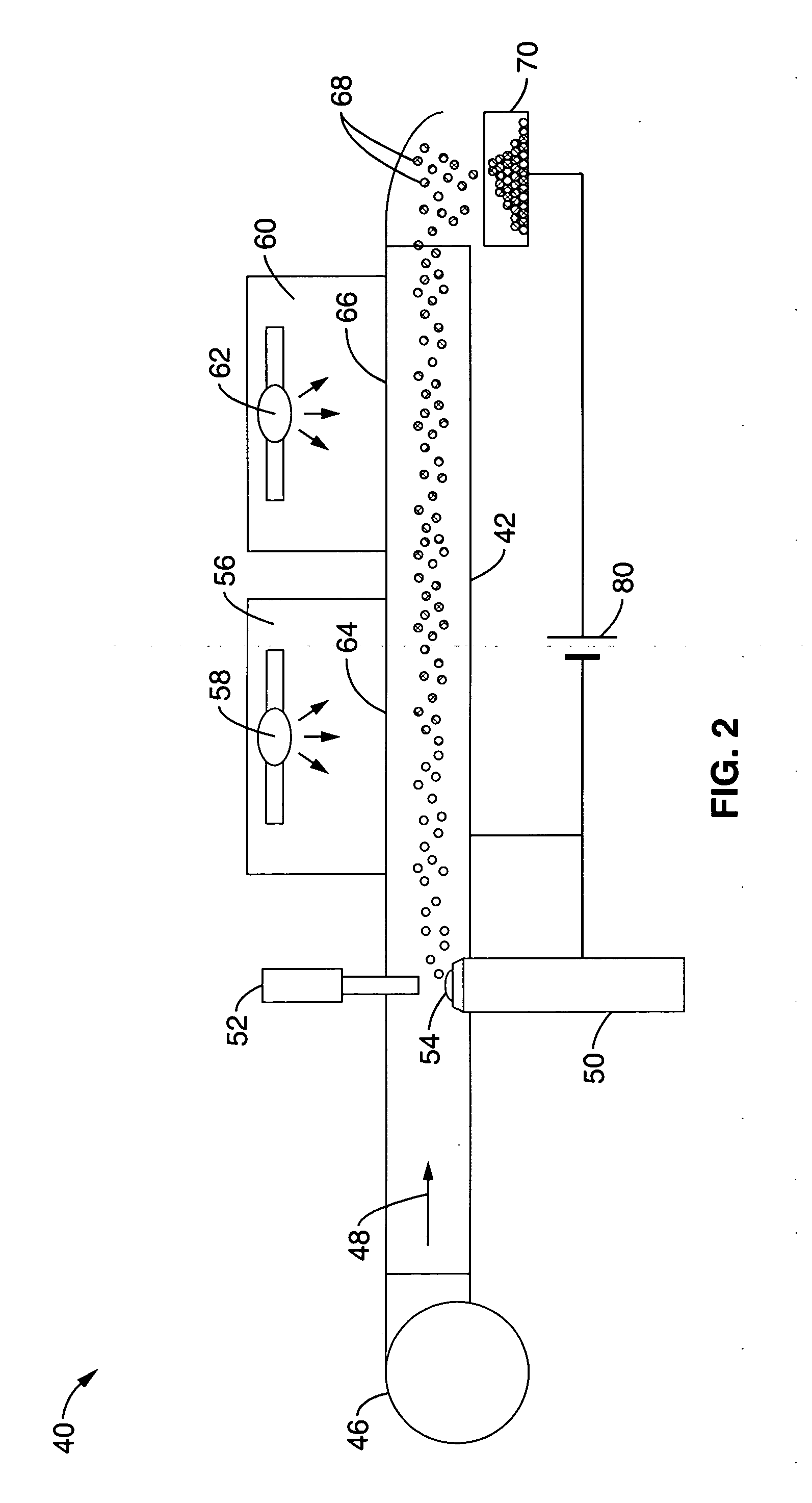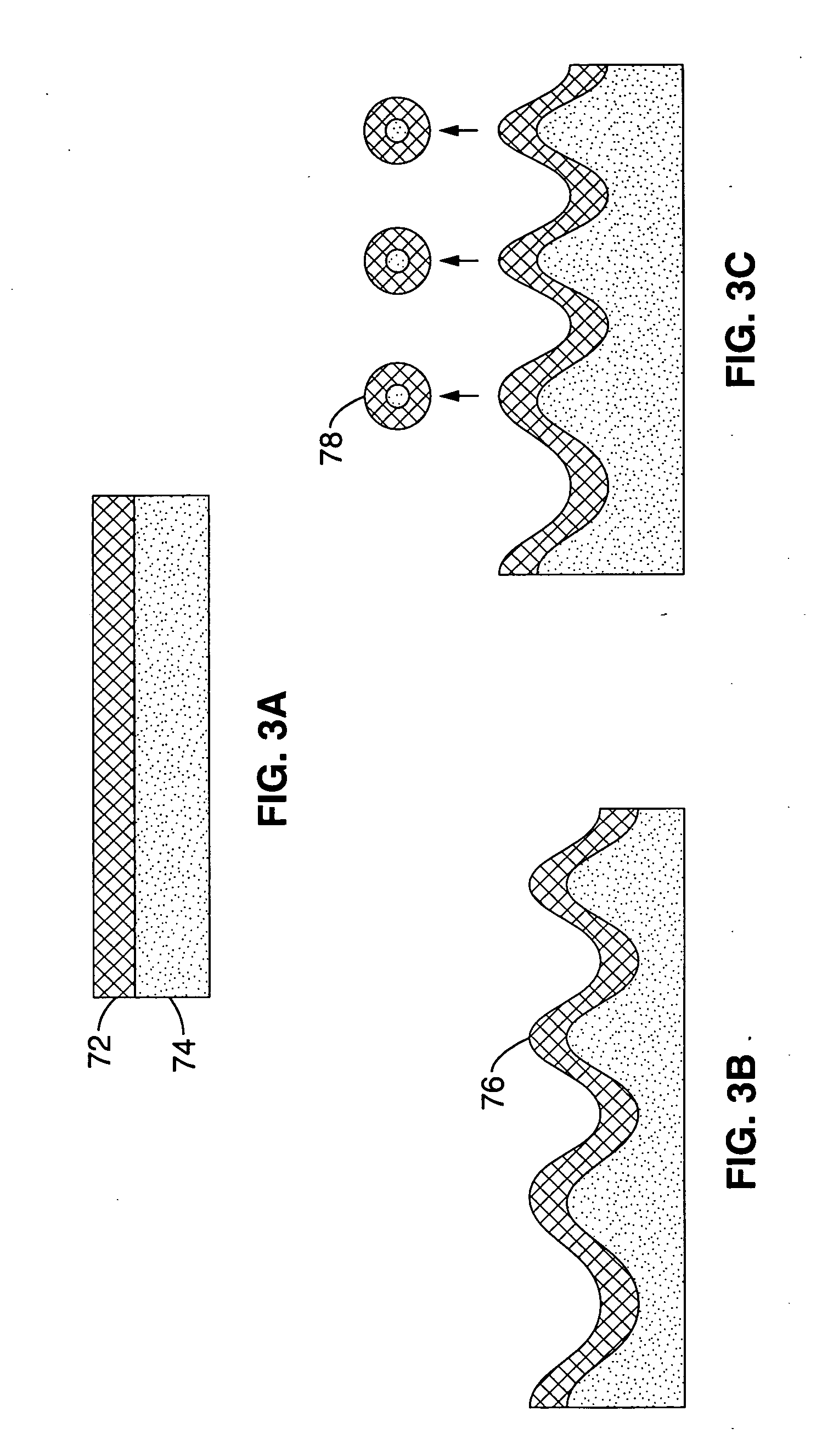Method and apparatus for liquid microencapsulation with polymers using ultrasonic atomization
a technology of polymer shell and microencapsulation method, which is applied in the field of liquid substrate encapsulation, can solve the problems of volatile core materials, reactive core materials, and toxicity to the environment or to the person handling or administering products, and achieves the effect of facilitating collection of cured capsules and minimizing surface deposition
- Summary
- Abstract
- Description
- Claims
- Application Information
AI Technical Summary
Benefits of technology
Problems solved by technology
Method used
Image
Examples
example 1
[0077] To demonstrate the viability of the methods and apparatus shown schematically in FIG. 1, a test apparatus was fabricated with a tubular flow channel approximately 18 inches long with a 2×2 inches square cross section made of acrylic plexiglass. A 6″×2″ UV transparent Fotodyne's UviClear top window was added in the region of the continuous UV curing lamp mainly emitting UV light between 260 nm and 460 nm and consuming 400 Watts of electrical power. The window transmits 85% of the UV light at 312 nm. To enhance the illumination inside the channel, the bottom and side walls were covered with highly reflecting aluminum foil. The flow rate in the channel was achieved using a variable controlled transformer (variac) to regulate the air fan. The speed of airflow in the channel was calibrated for the voltage settings of the variac using an anemometer. The flow rate used during the experiments was 2.4 ms−1. The horn ultrasound was a Vibra Cell Model V1A of Sonics and Materials.
[0078]...
example 2
[0082] Another non-limiting example of apparatus and method of the invention was tested using a multi-port injector as a source of microcapsules. The injector head was suspended at the top of a transparent housing with an ultraviolet light source directed into the interior. A collector was at the opposite end of the housing from the injector head and water was used as a trap. Microcapsules formed at the injector head would fall under the forces of gravity through the UV light to the collector.
[0083] In this example, the monomer Propoxylated(2) Neopentyl Glycol Diacrylate (SR-9003) from Sartomer, PA and the photo-initiator Benzil Dimethyl Ketal (Sarcure SR-1120) from Sartomer, PA were used. The monomer solution was prepared by adding 3% by weight photo-initiator to the monomer. The core material that was used was tap water and a surfactant, Tween-80. The water-surfactant solution was prepared by adding 10 ml of Tween-80 to 100 ml of water. A few drops of red ink were added to the wa...
PUM
| Property | Measurement | Unit |
|---|---|---|
| Angle | aaaaa | aaaaa |
| Diameter | aaaaa | aaaaa |
| Diameter | aaaaa | aaaaa |
Abstract
Description
Claims
Application Information
 Login to View More
Login to View More - R&D
- Intellectual Property
- Life Sciences
- Materials
- Tech Scout
- Unparalleled Data Quality
- Higher Quality Content
- 60% Fewer Hallucinations
Browse by: Latest US Patents, China's latest patents, Technical Efficacy Thesaurus, Application Domain, Technology Topic, Popular Technical Reports.
© 2025 PatSnap. All rights reserved.Legal|Privacy policy|Modern Slavery Act Transparency Statement|Sitemap|About US| Contact US: help@patsnap.com



